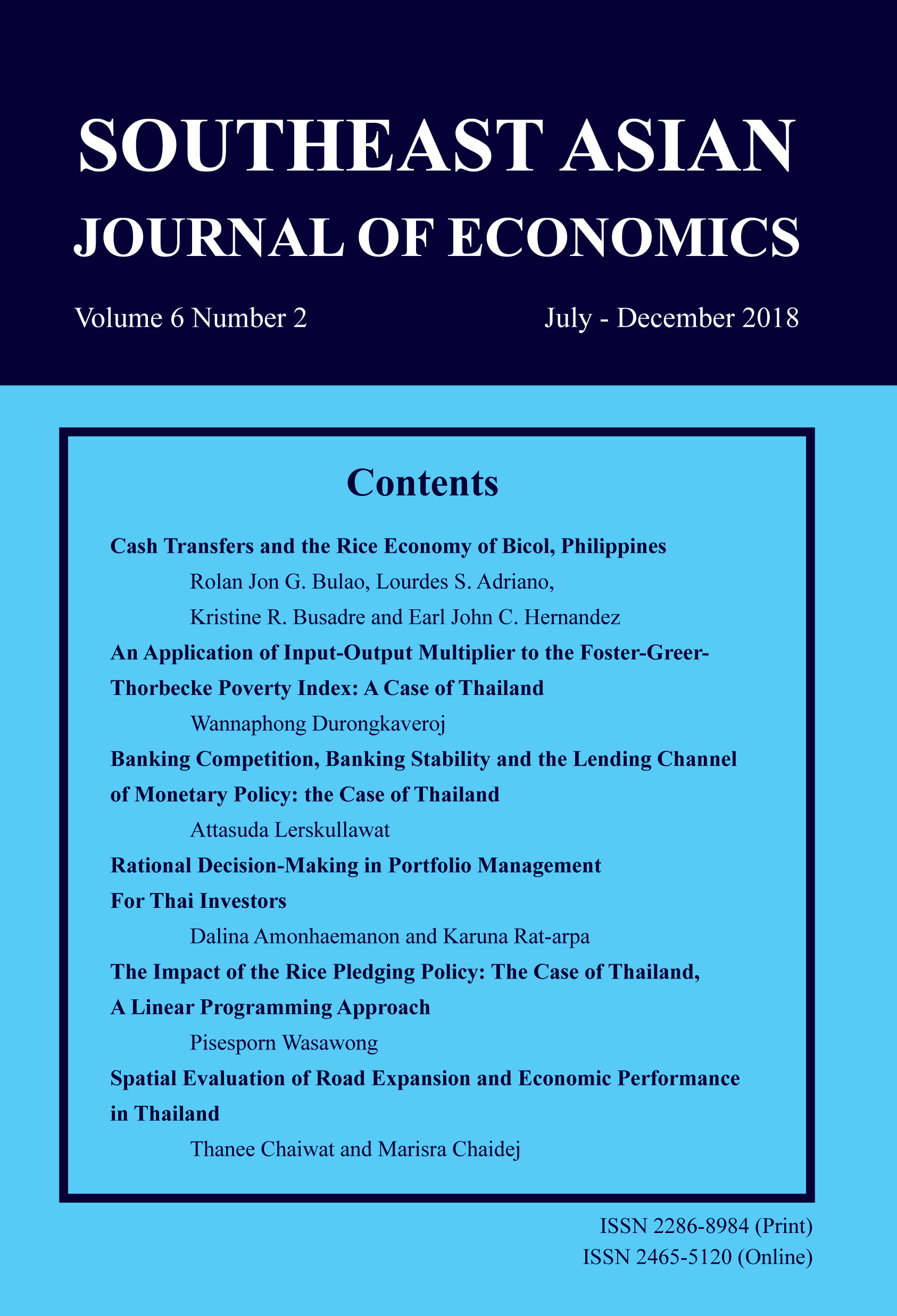Measuring Trade Creation and Trade Diversion Effects of the ASEAN Free Trade Area: a Gravity Model Approach
Keywords:
Trade Creation, Trade Diversion, the Stochastic Frontier Gravity Model, ASEAN, AFTAAbstract
The formation of trade agreements will result in trade creation when the importing country changes its import sourcing from non-members with higher costs to members with lower costs. On the other hand, if there is a shift in imports from non-member partners with lower costs to members with higher costs, the effect will be considered trade diversion. This paper estimates trade creation and trade diversion effects of the AFTA by using the stochastic frontier gravity model. ASEAN/AFTA members included in this study are Indonesia, Malaysia, the Philippines, Singapore, Thailand, and Vietnam. The study finds that the free trade agreement formed by ASEAN countries is welfare improving given that the trade creation and trade diversion effects are found to be positive and significant. The results are also robust when being tested in shorter time ranges and controlling for effects of other FTAs. This offers policy implications for countries to embrace regional cooperation and promote trade among any trading block members in a manner that does not raise trade barriers for other countries to divert trade from non-FTA trading partners.
Downloads
Published
How to Cite
Issue
Section
License
The submission of a manuscript implies that the paper is an original work and has not been published elsewhere. The author(s) authorize the journal to reproduce or distribute the paper in printed or other electronic forms.






